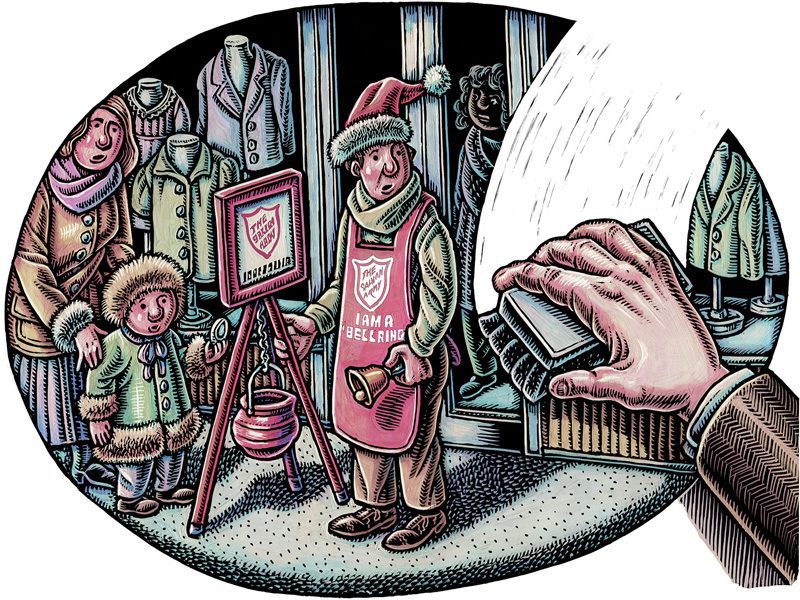BY ROBERT DOCTER –
Have you ever followed an erratic driver with a cell phone stuck in his ear, ignoring traffic, oblivious to the fact that others exist in his world? Have you ever been in a theater and heard a telephone ring three seats down from you? Cell phones. How did this happen? It was only yesterday mobile phones were stationary in cars for the very wealthy, and the rest of us used pay phones. What we’ve got is a cell phone epidemic.
Have you noticed that all adolescent boys seem to need to wear the crotch of their too large trousers somewhere around their knees with the cuffs wearing thin scraping the ground under their heels? All the girls seem to need to reveal the ugliest part of their anatomiestheir belly buttons. What happened? How do fashion fads catch on so fast and move with epidemic speed across the landscape?
Why is it that William Booth was able to span the globe with his rag-tag organization in 15 years, fill the seats in uncomfortable settings, ask people to engage in unpleasant tasks, and build a mighty Army that still lives today but finds growth much less explosive? How did it happen? Why did it slow?
Well–I’ve been reading this book called The Tipping Point–How Little Things Can Make a Big Difference. The author, Malcolm Gladwell, thinks he might have figured it out. He’s done a lot of research and come up with three essential factors that cause change to occur at epidemic speed. He calls the first one “The Law of the Few”–it emphasizes the “nature of the messenger(s).” It doesn’t seem to take large numbers of people to bring about significant change–only a few–say twelve. But the messenger must have certain qualities–be able to stimulate, excite, attract, inspire–be able to relate meaningfully to the persons receiving the message with a genuineness so deep that even the non-verbal message shouts of sincerity. It’s “word of mouth” that gets this message out.
The second he calls “The Stickiness Factor,” and this has to do with the quality of the message–whether or not it’s got something for the receiver that will cause it to “stick.” You can remember some advertising slogans–even finish the ad before the announcer gets to the punch line. It becomes memorable. The receivers of the message feel like participants in the process. It does not have to be bombastic, loud or dramatic — just involving. “There is a simple way to package information, that under the right circumstances can make it irresistible. All you have to do is find it.”
Third, Gladwell talks about the “Power of Context”–“the conditions and circumstances of the time and place they occur.” These are often little things–like graffiti on a wall or a broken window in the neighborhood–or a bunch of old, broken down cars parked on what used to be a lawn. These little things establish a context for anarchy, crime or carelessness. Within that context, it seems to flower. A message is sent that the system has collapsed–nobody cares. It’s the little foxes that spoil the vines. When we pay attention to the small details of the context of our lives, we begin the process of reversing a negative epidemic.
So these two people–William and Catherine had a passion. They believed they could clean up the east end of London by working with people from the inside out. They had a message. They kept it simple. They packaged it attractively. They knew how to relate. They knew the language of the street. They went where the people were. Everyone around them knew they cared. They found drunks and made them captains because they were able to tell their story in a way that grabbed. They took social outcasts and made them commissioners. They got people involved: in helping others…in serving food, cleaning houses…caring for children and the aged. They bought companies in order to make them safer for the workers. They got people jobs. Their message was memorable. It stuck. They seemed to know that the enemy of “stickiness” is clutter. They took people from a context of despair and put them to work cleaning up both the internal and external context of their lives.
So–what message are you sending–what’s the context of your corps building–of its soldiers? What is sticky about that message? Who are the few around you who have the ability and desire to send it with you? How can we translate the Law of the Few, the Stickiness Factor, and the Power of Context into today’s Salvation Army?










